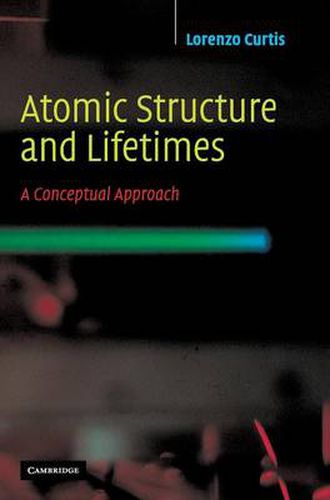Readings Newsletter
Become a Readings Member to make your shopping experience even easier.
Sign in or sign up for free!
You’re not far away from qualifying for FREE standard shipping within Australia
You’ve qualified for FREE standard shipping within Australia
The cart is loading…






This book presents a new approach to introductory graduate courses on atomic structure. The author’s approach utilizes conceptually powerful semiclassical modeling methods, and demonstrates the degree to which the Maslov-indexed EBK quantization elucidates the quantum mechanical formulation of level energies and lifetimes. It merges this with an update and extension of semiempirical data systematizations developed by Bengt Edlen to describe complex atoms, and adapts them to include the specification of lifetimes. The text emphasizes the historical basis of the nomenclature and methodologies of spectroscopy. However, interaction mechanisms are presented deductively, based on quantum mechanical and field theoretical models, rather than tracing their indirect paths of discovery. Many worked examples provide applications to areas such as astrophysics, hyperfine structure, and coherent anisotropic excitation. The book presents a firm foundation for specialists in atomic physics, as well as a capstone application for specialists in astrophysics, chemistry, condensed matter, and other related fields.
$9.00 standard shipping within Australia
FREE standard shipping within Australia for orders over $100.00
Express & International shipping calculated at checkout
This book presents a new approach to introductory graduate courses on atomic structure. The author’s approach utilizes conceptually powerful semiclassical modeling methods, and demonstrates the degree to which the Maslov-indexed EBK quantization elucidates the quantum mechanical formulation of level energies and lifetimes. It merges this with an update and extension of semiempirical data systematizations developed by Bengt Edlen to describe complex atoms, and adapts them to include the specification of lifetimes. The text emphasizes the historical basis of the nomenclature and methodologies of spectroscopy. However, interaction mechanisms are presented deductively, based on quantum mechanical and field theoretical models, rather than tracing their indirect paths of discovery. Many worked examples provide applications to areas such as astrophysics, hyperfine structure, and coherent anisotropic excitation. The book presents a firm foundation for specialists in atomic physics, as well as a capstone application for specialists in astrophysics, chemistry, condensed matter, and other related fields.